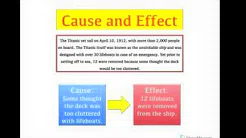Get Full Access to Grade 3 English Language and Arts - Skill Builder + New York State Test (NYST) Rehearsal
Currently, you have limited access to Grade 3 English Language and Arts - Skill Builder + New York State Test (NYST) Rehearsal. The Full Program includes,
Buy Practice Resources
 Online Program
Online Program
Read the story and answer the question.
“Inventions have long since reached their limit.” This was said by Julius Sextus Frontinus in AD 10. The Romans had invented aqueducts that could carry water for miles from lakes and rivers to dry places. Their engineers built roads that were so well-made that some of them still exist today. Their bridges spanned large distances. Frontinus decided that they had invented everything that could possibly be invented.
The patent office reviews new inventions to make sure that inventors are protected from those who might steal or copy their designs. The same statement made by Frontinus was later made by Charles H. Duell, who worked in the U.S. patent office in 1899. Telegraphs, phonographs, and steam engines had been invented. Mr. Duell became famous when he said, “Everything that can be invented has already been invented.”
Why have the statements by Frontinus and Duell both become famous?











